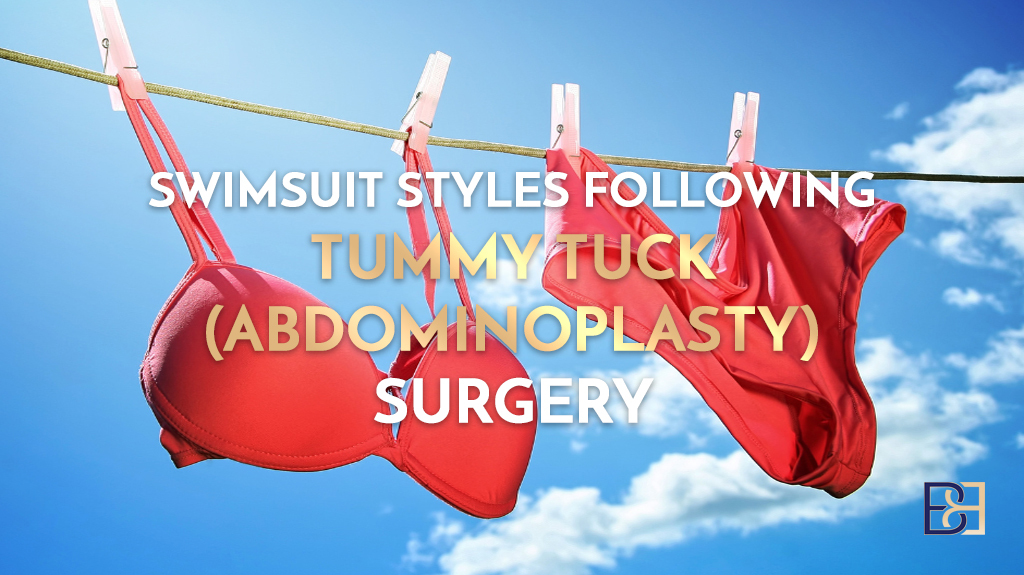Thinking about a C-tuck (C-abdominoplasty) after your C-section? A C-tuck combines a C-section with an abdominoplasty to fix excess skin and fat. This article will discuss the benefits, risks, and key considerations, helping you decide if this procedure is right for you.
Key Takeaways
- A C-tuck (C-abdominoplasty) combines a C-section and abdominoplasty, but comes with significant risks like infections and longer recovery times.
- It’s recommended to wait at least a year post-C-section before considering an abdominoplasty to allow the body to heal and stabilise.
- Consulting with qualified professionals is crucial to assess individual health and create a personalised surgical plan.
- Dr. Beldholm advises against combining these two procedures at the same time. It is recommended to wait until after you have fully recovered from your C-section to have your abdominoplasty.
Considering a C-Tuck (C-abdominoplasty)? Expert Advice on Post-C-Section Surgery
Book your appointment online now
Dr. Beldholm advises against combining these two procedures at the same time. It is recommended to wait until after you have fully recovered from your C-section to have your abdominoplasty.
A C-tuck (C-abdominoplasty) is a combination of a C-section and an abdominoplasty. This aims to focus on the aesthetic issues many women face post-pregnancy, particularly the excess skin and fat that often accompany a C-section scar. The abdominoplasty involves eliminating this excess skin and fat and repairing separated abdominal muscles.
However, combining these two surgeries is not without its risks. Medical professionals often discourage the C-tuck (C-abdominoplasty) procedure due to potential complications such as increased blood loss, infections, and prolonged recovery times. The abdominoplasty procedure alone can take an additional two or more hours when performed during a C-section, significantly extending the time a patient is under anaesthesia.
While the allure of a combined surgical procedure is strong—who wouldn’t want to minimise their time spent undergoing surgery?—it’s crucial to weigh the risks and benefits carefully. Consulting with a qualified professional and maintaining a stable weight before surgery can ensure the best results.
Dr. Beldholm advises against combining these two procedures at the same time. It is recommended to wait until after you have fully recovered from your C-section to have your abdominoplasty.
Introduction
The journey of motherhood brings about incredible changes in a woman’s body. As the baby grows, so does the extra weight and the inevitable changes to the body’s appearance. Many women choose to undergo procedures to regain their pre-pregnancy body, especially after a C-section leaves them with noticeable scars and excess skin.
A C-tuck (C-abdominoplasty) combines a C-section and an abdominoplasty, delivering both childbirth and the post-pregnancy body changes in one go. However, it’s generally advised to wait at least a year after a C-section before considering this procedure to allow your body ample time to heal and stabilise.
Maintaining a stable weight and having realistic expectations are crucial. The goal isn’t just to flatten the stomach but also to target the underlying muscles.
Understanding a C-Tuck (C-abdominoplasty)

Download our short guide: “11 Important abdominoplasty techniques that you need to know about”
The C-tuck (C-abdominoplasty) is a combination of a C-section and a tummy tuck (abdominoplasty). This procedure is designed to target both the childbirth process and the aesthetic concerns that arise after pregnancy. The abdominoplasty surgery involves removing excess skin and fat, as well as repairing separated abdominal muscles, which are common issues after pregnancy.
Women may choose to have a C-tuck (C-abdominoplasty) to elevate the appearance of their abdomen, which can be significantly affected by pregnancy and surgical delivery. This combined approach also helps reduce the appearance of C-section scar tissue, making it an attractive option for many.
However, combining these surgeries can lead to complications such as infections and prolonged recovery times.
Safety and Risks of a C-Tuck (C-abdominoplasty)

Combining a C-section and a tummy tuck (abdominoplasty) into one surgery is considered risky. This dual procedure increases the chances of complications such as blood loss, infection, and prolonged recovery time. The incidence of complications can reach up to 31.57% for seroma and 18% for wound infections when these procedures are combined.
Patients may experience issues like outward protrusion of the abdomen and poor scarring, which are often exacerbated by the combination of surgeries. The recovery period can be significantly longer when undergoing both surgeries separately, adding to the physical and emotional strain.
Alternatives to a C-Tuck (C-abdominoplasty)
For those hesitant about the risks of a C-tuck (C-abdominoplasty), several alternatives exist. Waiting at least a year after a C-section before considering a tummy tuck (Abdominoplasty) is generally advised. This allows the body time to heal and achieve stability.
Different types of abdominoplasty are available based on the amount of skin to remove. For minimal skin below the belly button, a mini tummy tuck (abdominoplasty) may be suitable. This procedure is less invasive and focuses on the lower abdominal area.
Recovery Process After a C-Tuck (C-abdominoplasty)
The recovery process after a C-tuck (C-abdominoplasty) is significant, requiring considerable support at home. Most individuals can return to work around the one-month mark, but those with physically demanding jobs may need longer. Avoiding heavy lifting and strenuous activities for about six to eight weeks post-surgery is important.
Patients should sleep with their upper body elevated and knees bent for the first two weeks to minimise swelling. A fibre-rich diet to prevent constipation and follow-up appointments with the surgeon are crucial for monitoring recovery and preventing any complications.
Many women report better posture and a reduction in back pain post-surgery, often linked to repaired and strengthened abdominal muscles. The recovery period, while challenging, can lead to significant changes in physical appearance.
Common Questions About C-Tucks (C-abdominoplasty)

Many questions arise when considering a C-tuck. One common query is about the suitability of a mini abdominoplasty, which focuses on removing the loose flap of skin that hangs on the lower tummy after a C-section. This less invasive procedure is ideal for patients with minimal loose skin below the umbilicus.
C-tuck (C-abdominoplasty) surgery is less common than one might think, with less than 3% of tummy tucks (abdominoplasty) occurring at the same time as a C-section. This rarity is due to the increased risks and complications associated with combining the two surgeries.
Another frequent question is about the ‘mini C-tuck,’ (C-abdominoplasty) a misnomer referring to the removal of a small flap of skin during a C-section, which is not the same as a full tummy tuck. Understanding these nuances helps in making an informed decision.
Summary
Dr Beldholm would strongly advise against this operation as the procedure comes with significant risks and requires careful consideration and consultation with qualified professionals.
If you’re considering this surgery, weigh the benefits and risks carefully, consult with a specialist surgeon, and explore alternatives. Ultimately, your health and well-being are paramount, and the right decision will help you achieve your aesthetic goals and a complication-free recovery.
Book your appointment online now
Frequently Asked Questions
How common is C-tuck (C-abdominoplasty) surgery?
C-tuck (C-abdominoplasty) surgery isn’t super common; it happens in less than 3% of tummy tuck (Abdominoplasty) cases during a C-section. So, you’re not alone in wondering about it!
What is a ‘mini C-tuck’ (C-abdominoplasty)?
A ‘mini C-tuck’ (C-abdominoplasty) basically means removing a small section of skin during a C-section, but it’s definitely not the same as getting a full tummy tuck (abdominoplasty). So, don’t get them mixed up!
Why is C-tuck (C-abdominoplasty) surgery considered risky?
C-tuck (C-abdominoplasty) surgery is risky because it merges two big procedures, which bumps up the chance of complications like blood loss and infection. So, it’s crucial to weigh those risks before going for it!
What is the primary reason for getting a tummy tuck (Abdominoplasty)?
The main reason people get a tummy tuck (abdominoplasty) is to get rid of excess skin and alter the abdominal shape, especially after pregnancy.
How long should I wait after a C-section before considering a tummy tuck (abdominoplasty)?
You should wait at least 12 months after a C-section before thinking about a tummy tuck (Abdominoplasty) to ensure you’re fully healed. It’s important to give your body that time!


